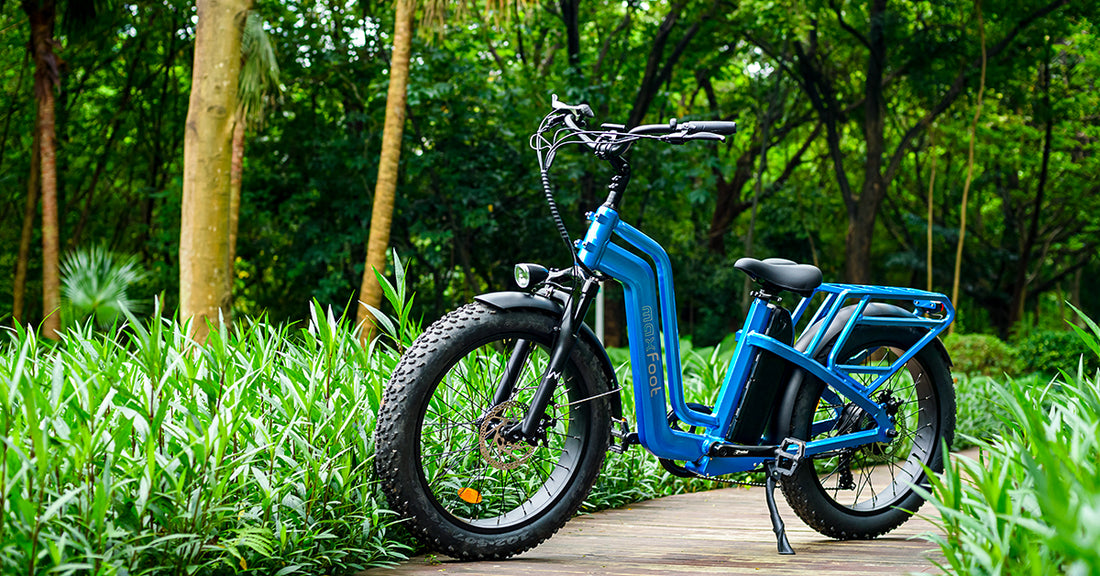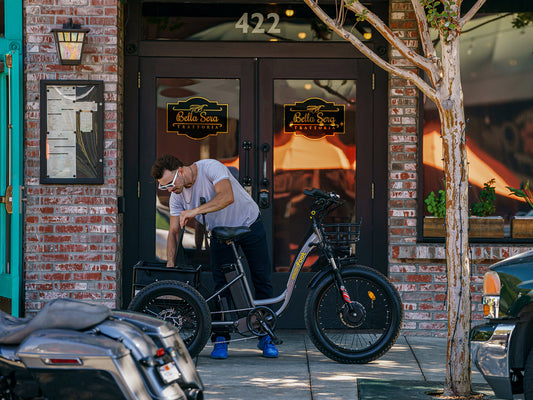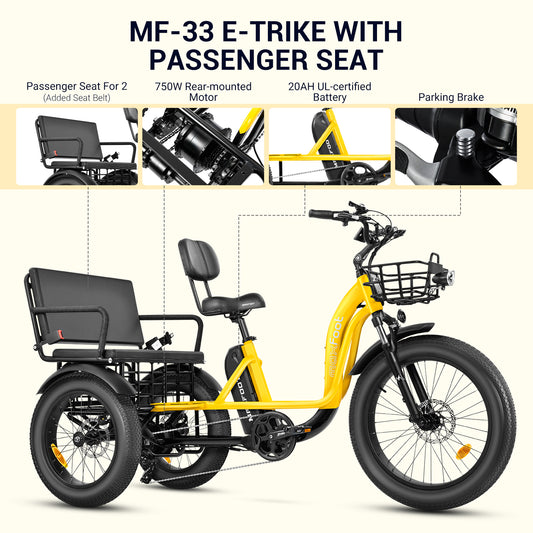E-bikes have exploded in popularity for commuters, outdoor enthusiasts, and eco-conscious riders.
However, with a variety of models, features, and designs available, selecting the perfect electric bike can seem daunting.
Therefore, we will walk you through the top tips to simplify the process, helping you find the best e-bike to meet your unique riding needs and lifestyle.
Here’s what you need to consider while selecting the perfect e-bike for you:
1. Determine Your Riding Needs
Your primary use for an e-bike is the most crucial factor in selecting the right model. Consider whether you will be using the bicycle for commuting, off-road adventures, leisurely rides, or cargo transport.
City commuters might prefer a sleek, lightweight model with solid battery life, while mountain bikers may prioritize power, durability, and suspension features.
Clarifying your riding needs from the outset helps narrow down choices and ensures a satisfying electric bike experience.
2. Understand the Three Classes of E-Bikes
E-bikes are grouped into three main classes based on their motor power, throttle, and assisted speed. Understanding these classifications will help you choose an e-bike that complies with your local regulations.
|
E-Bike Classes |
|||
|
Categories |
Class 1 |
Class 2 |
Class 3 |
|
Top Speed |
20 Mph |
20 Mph |
28 Mph |
|
Pedal Assist |
Yes |
Yes |
Yes |
|
Throttle |
No |
Yes |
Yes (Optional) |
- Class 1: Ideal for beginners and riders who don’t need high-speed power. Class 1 bikes are permitted on most bike paths and roads.
- Class 2: The throttle gives riders more control over their speed, making them popular for commuting, casual rides, or tackling light terrain.
- Class 3: The fastest of the three, Class 3 e-bikes are well-suited for commuters, fitness enthusiasts, and anyone who enjoys longer commutes and those looking to cover more ground quickly. But they may face restrictions on bike paths and certain roads.
3. Types of E-Bike
Once you know how you plan to use your e-bike and understand the different classes, you can start to explore the different types of e-bikes available. Here are some of the most popular types:
- Cruiser Electric Bikes: Comfortable and stylish, an electric cruiser bike is designed for leisurely rides with relaxed upright comfortable seating and smooth handling on flat terrains like bike paths and paved roads.
- Commuter Electric Bikes: These e-bikes prioritize efficiency and comfort for daily travel, often with upright design, long-range, fenders, and lights for safe riding in traffic.
- Electric Mountain Bikes (eMTBs): Built for off-roading, eMTBs include wide tires, strong suspension, powerful motors, and durable frames designed to handle rugged terrain and dirt trails.
- Folding Electric Bikes: Compact and easy to store, folding e-bikes are great for people who live in small apartments or who need to take their e-bike on public transportation.
4. Essential Features to Consider
Several critical features should be factored into your e-bike decision to meet your performance and comfort expectations.
- Check the Motor Power and Type: Motors vary in wattage, typically between 250W to 750W or more. Higher wattage delivers more power and speed, suited for hilly areas or faster commutes, while lower wattage is ideal for flat urban riding.
- Evaluate Battery Size and Range: Battery capacity determines how far you can ride on a single charge. Look for a battery with higher capacity (measured in Wh) and enough range for your commute or trip length, typically between 20-50+ miles per charge.
- Pedal Assist and Throttle: Pedal assist provides extra power as you pedal, while the throttle allows for motorized propulsion without pedaling. Choose based on the level of assistance you prefer.
- Frame and Design: E-bike frames are crafted from various materials, such as aluminum or carbon fiber, influencing durability and weight. Consider your preference for a step-through frame for easy mounting and casual riding, or a step-over frame for more traditional and rugged terrain riding.
- Assess Weight and Portability: Heavier e-bikes can be challenging to carry or transport, especially if you live in an apartment. Folding bikes or models with lighter frames are practical options for portability.
- Safety Features: Look for features like bright lights, turn signals, reflective accents, and reliable brakes to ensure safe riding, especially if you’ll be riding in low-light or high-traffic areas.
5. Compare Price and Warranty
Prices for e-bikes vary widely depending on brand, features, and type. Premium e-bikes with robust motors and advanced features can cost thousands, while budget models are available for under $1,000.
Be sure to balance your budget with your requirements, and look closely at warranty details. Quality e-bike brands usually offer a warranty covering the battery, motor, and frame, giving you peace of mind on your investment.
6. Decide Between Online vs. In-Store Purchase
Purchasing an ebike online provides more choices, often at better prices, but in-store shopping allows you to see and feel the bike firsthand.
In-store purchases can also provide the benefit of assembly and tuning, while online purchases often come partially assembled. Consider the importance of hands-on interaction and after-sales support when deciding between online and in-store shopping.
7. Test Ride
A test ride is invaluable when choosing an e-bike. It allows you to gauge the bike's comfort, power, and handling.
Pay attention to factors such as the smoothness of the pedal assist, the responsiveness of the throttle, and overall stability. If you're buying online, look for stores that offer return policies, allowing you to test the ebike risk-free.
Best Electric Cruiser Bike: Maxfoot MaxZ 20"

The MaxZ 20" electric cruiser bike is a high-performance cruiser designed for urban rides and casual outings. Powered by a 750W brushless geared hub motor (reaching up to 1100W peak), it provides robust power and 90 Nm torque, making it a strong choice for varied terrain.
The adjustable handlebar allows for a custom ride, while 20" fat tires and front fork suspension ensure stability and comfort on different surfaces. This model accommodates riders from 5'4" to 6'3" and can handle loads up to 300 lbs.
Best Fat Tire Electric Bike: Maxfoot MaxZ 24"

The MaxZ 24" offers similar features to the 20" model but is built with a larger 24" frame, enhancing stability and comfort for larger riders or rougher trails. Equipped with a 48V 20AH Lithium battery, it provides a range of 85+ miles, ideal for off-road adventures or extended travel.
The wide 4” fat tires offer stability and grip, making it a reliable option for sand, snow, or uneven trails. Additionally, the MaxZ 24" electric cruiser bike includes a front suspension fork for added comfort, especially on bumpy paths. Ideal for adventurous riders, it offers a sturdy frame, wide tires, and integrated lighting for enhanced safety on various terrains.
Conclusion
Selecting the perfect electric bike involves careful consideration of your needs, from bike class and type to features and budget.
By following these tips and doing your research, you’ll be better equipped to choose a model that fits your lifestyle, whether you need a daily commuter or a rugged off-road companion.




